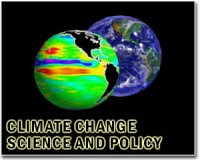
Sheer numbers and the lack of legal status under international law mean a vicious humanitarian crisis is looming, say experts. Bottom line? Millions of hungry, poor, vulnerable people may simply have nowhere to go. "In the future, who is going to open their doors to all this misery?" is the rhetorical question asked by Jean-Francois Durieux, in charge of climate change at the UN High Commissioner for Refugees (UNHCR).
A decade ago, the threat of mass migrations driven by global warming seemed remote. Predicting how climate change might affect the planet was already vexingly difficult, and trying to calculate the additional impact on human communities only compounded the uncertainty.
It was also feared that extending "refugee" status to those driven from homelands by floods, drought or damaged ecosystems would dilute efforts to help those fleeing political persecution as defined under UN provisions. But today these reservations have given way to alarm as scientists say we are on track for worst-case scenarios laid out only two years ago by the Nobel-winning UN Intergovernmental Panel on Climate Change (IPCC).
Two studies issued before the December 7-18 climate conference in Copenhagen say that, on current trends, Earth is on track for warming of up to 6.4 degrees Celsius this century and sea-level rise of at least a metre. The outcome would be catastrophic, in terms of drought, floods and storm surges, leading inevitably to widespread homelessness.
"Environmentally induced migration has the potential to become a phenomenon of unprecedented scale and scope," said Koko Warner at the UN University Institute of Environment and Human Security in Bonn, Germany. "At 4.0 C, climate-driven migration redraws the map of population distribution across the surface of the globe," said Francois Gemmene of France's Institute for Sustainable Development and International Relations (IDDRI).
At least three forces are likely to push people in search of more hospitable terrain: rising sea levels, drought and dying coral reefs. If the world's population peaks at about nine billion in 2050, a large chunk of humanity will live in mega-cities spread across deltas vulnerable to the twin threats of submergence and subsidence.
In the Ganges, Mekong and Nile deltas, for example, a one-metre increase would inundate 23.5 million people and destroy 1.5 million hectares \of farmland, according to the 2009 UN State of the World Population report. Vietnam would be hit hardest: 10.8 percent of its population would be uprooted, 10 percent of gross domestic product (GDP) wiped out, and a quarter of fertile wetlands destroyed, according to the report.
Several low-lying island nations, including Tuvalu and the Maldives, are already shopping for new homelands. Drought due to changing weather patterns and melting glaciers is another looming driver of involuntary migration.
The Ganges, Brahmaputra, Irawaddy, Salween, Mekong Yangtze and Yellow rivers, which nourish some 1.4 billion people in Asia, depend on Himalayan glaciers melting under temperature hikes several fold the global average.
Predicted decreases in rainfall would wreak havoc across a wide swathe of arid and semi-arid Africa where fresh water is already in critically short supply. Then there are the half-billion people whose livelihood depends directly on coral reefs already in steep decline due to warming seas and increased ocean acidification.
"What are you going to do with 500 million people if - probably 'when' - that problem hits you?", asked Pavan Sukhdev, a leading authority on the economics of ecosystems.






No comments:
Post a Comment